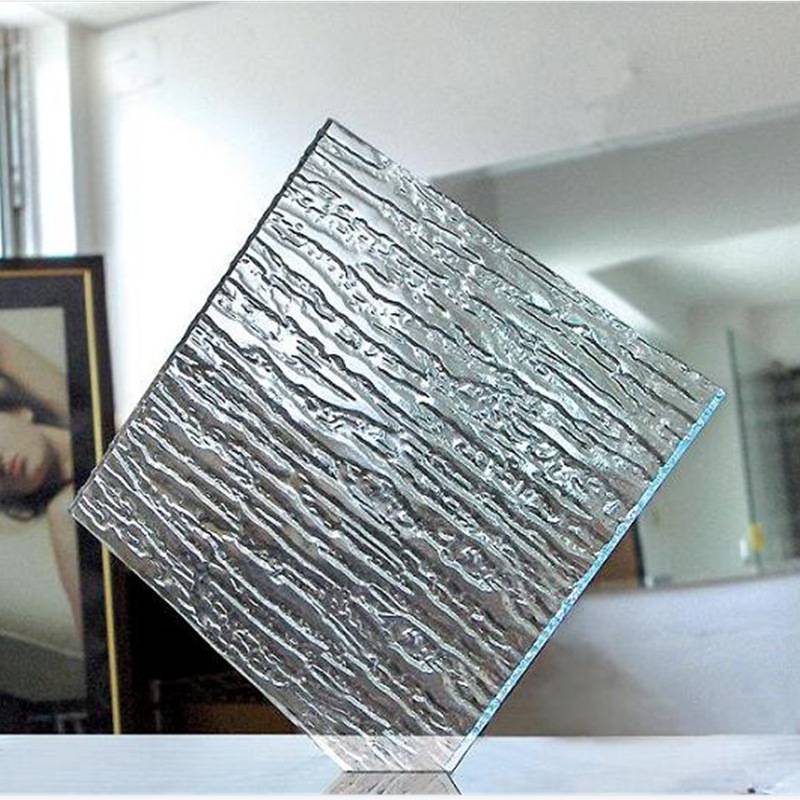The Pricing Dynamics of 6mm Float Glass A Comprehensive Overview
Float glass, a significant material in the construction and automotive industries, has seen fluctuating prices driven by various factors ranging from production costs to demand variations. Among the various thicknesses available, 6mm float glass stands out for its versatility and applications. This article delves into the intricate pricing dynamics surrounding 6mm float glass, exploring factors influencing its price, market trends, and future outlook.
Understanding Float Glass
Before delving into pricing, it is essential to understand what float glass is. Float glass is produced by floating molten glass on top of molten tin, creating a smooth, uniform surface. This manufacturing method results in high-quality glass with excellent optical clarity, making it ideal for windows, doors, and façades in residential and commercial structures. The 6mm thickness offers a balance between strength and weight, making it particularly popular among architects and builders.
Key Factors Influencing the Price of 6mm Float Glass
1. Raw Material Costs The primary ingredients of float glass are silica sand, soda ash, and limestone. Fluctuations in the prices of these raw materials significantly impact the overall production cost of float glass. For instance, an increase in demand for silica sand due to the construction boom can drive up prices, which, in turn, is reflected in the retail price of the finished product.
2. Energy Prices The production of float glass is an energy-intensive process, requiring high temperatures for melting raw materials. As a result, energy prices, particularly natural gas and electricity, play a crucial role in the pricing of float glass. Any spikes in energy costs can lead to increased production expenses, ultimately impacting the final price of 6mm float glass.
3. Market Demand and Supply The demand for float glass tends to correlate with the health of the construction industry. In periods of economic growth, when construction activities surge, the demand for 6mm float glass rises, leading to price increases. Conversely, during economic downturns, the demand may wane, resulting in price reductions. Supply chain disruptions, such as those caused by the COVID-19 pandemic, can also exacerbate price volatility.
6mm float glass price
4. Technological Innovations Advances in glass manufacturing technology can affect pricing. Improved production techniques can lead to cost savings and higher efficiency, allowing manufacturers to lower prices. Moreover, innovations that enhance the properties of float glass, such as energy efficiency or impact resistance, can create new market segments and influence pricing strategies.
5. Geopolitical Factors Geopolitical events can have far-reaching effects on raw material availability and pricing. Trade tariffs, import restrictions, or other regulatory changes can alter the cost landscape for manufacturers, potentially leading to price increases for end consumers.
Market Trends and Future Outlook
As of 2023, the global market for float glass, including the 6mm variant, is poised for growth, driven by increased construction activities and a rising focus on energy-efficient buildings. However, this growth is tempered by challenges such as fluctuations in raw material prices and potential geopolitical tensions impacting trade.
The rise of sustainable building practices is also influencing the float glass market. There is growing demand for eco-friendly glass solutions, which can lead to the introduction of premium pricing for specialized products, even as the standard 6mm float glass might face competitive pricing pressures.
Conclusion
In conclusion, the price of 6mm float glass is subject to a complex interplay of factors that reflect broader economic conditions, resource availability, and industry innovations. Understanding these dynamics is crucial for stakeholders in the construction and manufacturing sectors. As the market evolves, businesses must stay attuned to these influences to navigate pricing challenges effectively, ensuring they meet both the demand for quality products and the sustainability goals of the future.
 Afrikaans
Afrikaans  Albanian
Albanian  Amharic
Amharic  Arabic
Arabic  Armenian
Armenian  Azerbaijani
Azerbaijani  Basque
Basque  Belarusian
Belarusian  Bengali
Bengali  Bosnian
Bosnian  Bulgarian
Bulgarian  Catalan
Catalan  Cebuano
Cebuano  Corsican
Corsican  Croatian
Croatian  Czech
Czech  Danish
Danish  Dutch
Dutch  English
English  Esperanto
Esperanto  Estonian
Estonian  Finnish
Finnish  French
French  Frisian
Frisian  Galician
Galician  Georgian
Georgian  German
German  Greek
Greek  Gujarati
Gujarati  Haitian Creole
Haitian Creole  hausa
hausa  hawaiian
hawaiian  Hebrew
Hebrew  Hindi
Hindi  Miao
Miao  Hungarian
Hungarian  Icelandic
Icelandic  igbo
igbo  Indonesian
Indonesian  irish
irish  Italian
Italian  Japanese
Japanese  Javanese
Javanese  Kannada
Kannada  kazakh
kazakh  Khmer
Khmer  Rwandese
Rwandese  Korean
Korean  Kurdish
Kurdish  Kyrgyz
Kyrgyz  Lao
Lao  Latin
Latin  Latvian
Latvian  Lithuanian
Lithuanian  Luxembourgish
Luxembourgish  Macedonian
Macedonian  Malgashi
Malgashi  Malay
Malay  Malayalam
Malayalam  Maltese
Maltese  Maori
Maori  Marathi
Marathi  Mongolian
Mongolian  Myanmar
Myanmar  Nepali
Nepali  Norwegian
Norwegian  Norwegian
Norwegian  Occitan
Occitan  Pashto
Pashto  Persian
Persian  Polish
Polish  Portuguese
Portuguese  Punjabi
Punjabi  Romanian
Romanian  Russian
Russian  Samoan
Samoan  Scottish Gaelic
Scottish Gaelic  Serbian
Serbian  Sesotho
Sesotho  Shona
Shona  Sindhi
Sindhi  Sinhala
Sinhala  Slovak
Slovak  Slovenian
Slovenian  Somali
Somali  Spanish
Spanish  Sundanese
Sundanese  Swahili
Swahili  Swedish
Swedish  Tagalog
Tagalog  Tajik
Tajik  Tamil
Tamil  Tatar
Tatar  Telugu
Telugu  Thai
Thai  Turkish
Turkish  Turkmen
Turkmen  Ukrainian
Ukrainian  Urdu
Urdu  Uighur
Uighur  Uzbek
Uzbek  Vietnamese
Vietnamese  Welsh
Welsh  Bantu
Bantu  Yiddish
Yiddish  Yoruba
Yoruba  Zulu
Zulu 

